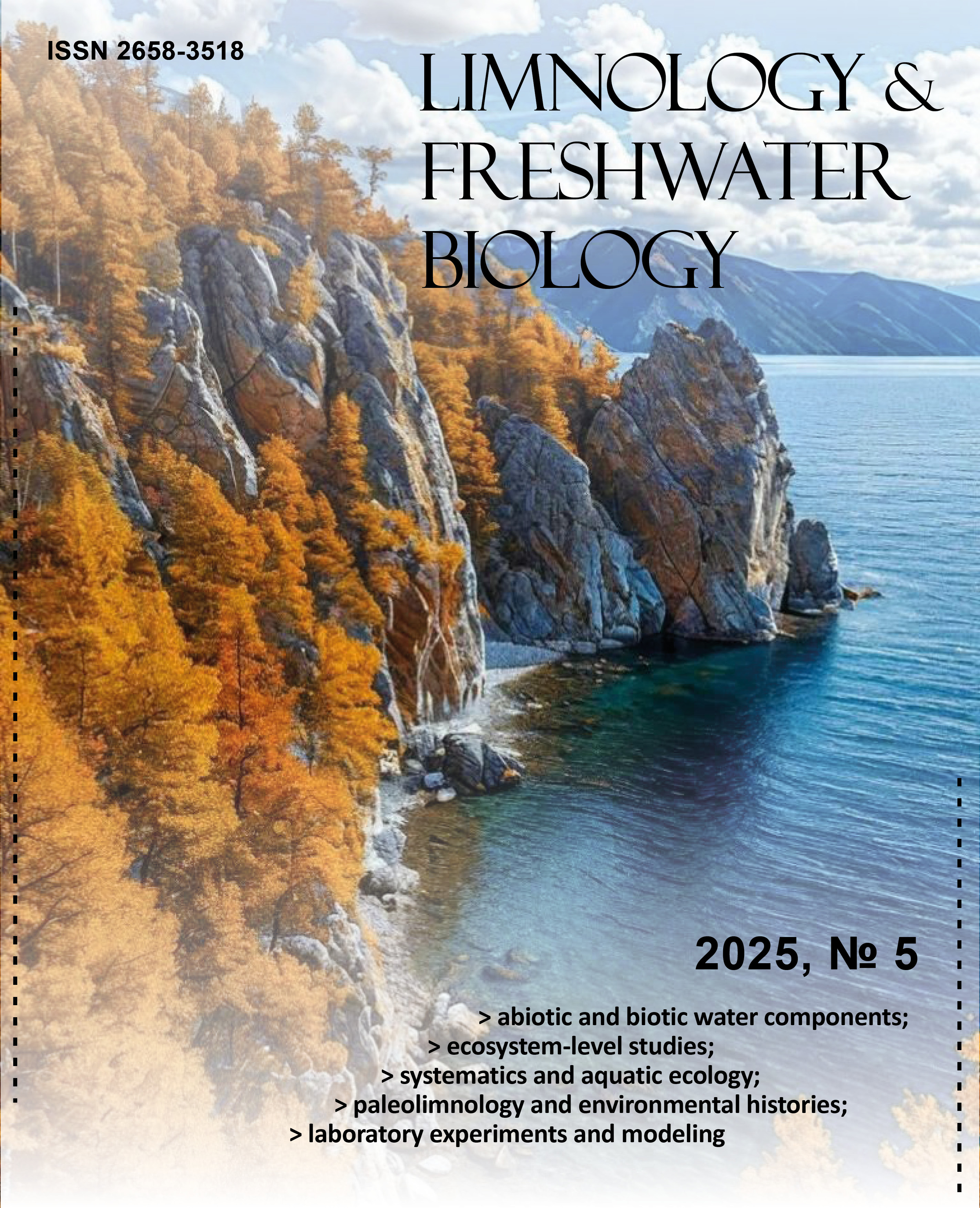Spatial and temporary differences in the development of Ulnaria danica, Ulnaria acus, and Fragilaria radians in Lake Baikal
DOI:
https://doi.org/10.31951/2658-3518-2025-A-5-1178Keywords:
Metabarcoding, Microscopy, Diatoms, 18S rRNA, Lake BaikalAbstract
The assessment of phytoplankton diversity in freshwater bodies strongly depends on the methods used for taxonomic identification. Araphid diatoms of the genera Ulnaria (Kützing) Compère and Fragilaria Kützing are often dominate the phytoplankton composition of freshwater ecosystems. To use of an integrated approach, including metabarcoding using analysis of fragments of the V3-V4 region of 18S rRNA, light and scanning electron microscopy, made it possible to assess the differences of these species. It was shown that in 2017, a gradual change of the studied species occurred in the Southern and Middle parts of Lake Baikal, which is due to the fact that the high development of Fragilaria radians is early then ones of Ulnaria acus. Thus, during the hydrological spring in the pelagic zone of the lake in these areas, and in the Chivyrkuisky and Barguzinsky Bays, U. acus dominated among diatoms. The population development in the Northern part of the lake did not correspond to the revealed trends, according to which a high number of both species should be expected here in the late spring, but it did not exceed 3% of the total number. In the summer, the number of U. acus decreased significantly and reached its minimum in the autumn. Ulnaria danica was present in the phytoplankton of large bays throughout the entire study period.
Downloads
Published
Issue
Section
License
Copyright (c) 2025 Limnology and Freshwater Biology

This work is licensed under a Creative Commons Attribution-NonCommercial 4.0 International License.

This work is distributed under the Creative Commons Attribution-NonCommercial 4.0 International License.







